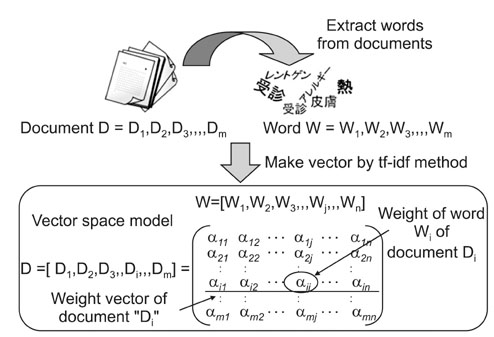Healthc Inform Res.
2011 Sep;17(3):178-183. 10.4258/hir.2011.17.3.178.
Japanese EMRs and IT in Medicine: Expansion, Integration, and Reuse of Data
- Affiliations
-
- 1Chiba University Hospital, Chiba, Japan. takaba@ho.chiba-u.ac.jp
- KMID: 1974244
- DOI: http://doi.org/10.4258/hir.2011.17.3.178
Abstract
OBJECTIVES
The prevalence of electronic medical record in Japan varies according to the size of the hospital which is 62.5% in major hospitals, 21.7% in medium, 9.1% in small size hospitals, and 16.5% in clinics. The complete paperless system is very limited, though some major hospitals are aiming at this system. Several regional network systems which connect different platforms of EMRs, have been developing in many districts, while the final picture of a regional network has not been clearly proposed. To develop a whole electronic health record or personal health records system from the regional network data, we have several obstacles to overcome such as standardization, a privacy act, unique national health number.
METHODS
Some experimental trials have just been started. The reuse of the accumulated data has also just been initiated. We exploited text mining systems (term frequency-inverse document frequency method) to find similar cases and auto-audit Japanese diagnosis related group (DRG) coding by using discharge summaries.
RESULTS
The same or even a more extreme phenomenon of huge data accumulation is occurring in genetic research and confluence of multi-disciplines of informatics is the next step, which has an enormous accumulation of data and discoveries of the relations beyond the dimension of each informatics.
CONCLUSIONS
We need another approach to science apart from the conventional method, and data-driven approach with data mining techniques must be brought in for each field. Informaticians have new important roles as coordinators to link up numerous phenomena over dimensions.
MeSH Terms
Figure
Cited by 1 articles
-
Reusability of EMR Data for Applying Cubbin and Jackson Pressure Ulcer Risk Assessment Scale in Critical Care Patients
Eunkyung Kim, Mona Choi, JuHee Lee, Young Ah Kim
Healthc Inform Res. 2013;19(4):261-270. doi: 10.4258/hir.2013.19.4.261.
Reference
-
1. Seed Planning Inc. Seed planning: market research & consulting [Internet]. c2001-2011. cited at 2011 Sep 14. Tokyo: Seed Planning Inc;Available from: http://www.seedplanning.co.jp/.2. Takada A, Guo J, Tanaka K, Sato J, Suzuki M, Suenaga T, Kikuchi K, Araki K, Yoshihara H. Dolphin project: cooperative regional clinical system centered on clinical information center. J Med Syst. 2005. 29:391–400.
Article3. Jha AK, Doolan D, Grandt D, Scott T, Bates DW. The use of health information technology in seven nations. Int J Med Inform. 2008. 77:848–854.
Article4. van der Linden H, Diepen S, Boers G, Tange H, Talmon J. Towards a generic connection of EHR and DSS. Stud Health Technol Inform. 2005. 116:211–216.5. Ruch P, Baud R, Geissbuhler A. Evaluating and reducing the effect of data corruption when applying bag of words approaches to medical records. Int J Med Inform. 2002. 67:75–83.
Article6. Lan M, Tan CL, Su J, Lu Y. Supervised and traditional term weighting methods for automatic text categorization. IEEE Trans Pattern Anal Mach Intell. 2009. 31:721–735.
Article7. Lu Z, Kim W, Wilbur WJ. Evaluating relevance ranking strategies for MEDLINE retrieval. J Am Med Inform Assoc. 2009. 16:32–36.
Article8. Suzuki T, Doi S, Shimada G, Takasaki M, Tamura T, Fujita S, Takabayashi K. Auto-selection of DRG codes from discharge summaries by text mining in several hospitals: analysis of difference of discharge summaries. Stud Health Technol Inform. 2010. 160:1020–1024.9. MeCab: yet another part-of-speech and morphological analyzer [Internet]. c2009. cite at 2011 Sep 14. Kyoto: Kyoto University;Available from: http://mecab.sourceforge.net/.10. McMillan TE, Allan W, Black PN. Accuracy of information on medicines in hospital discharge summaries. Intern Med J. 2006. 36:221–225.
Article11. Callen J, McIntosh J, Li J. Accuracy of medication documentation in hospital discharge summaries: a retrospective analysis of medication transcription errors in manual and electronic discharge summaries. Int J Med Inform. 2010. 79:58–64.
Article12. O'Leary KJ, Liebovitz DM, Feinglass J, Liss DT, Evans DB, Kulkarni N, Landler MP, Baker DW. Creating a better discharge summary: improvement in quality and timeliness using an electronic discharge summary. J Hosp Med. 2009. 4:219–225.13. Yang JY, Yang MQ, Zhu M, Arabnia HR, Deng Y. Promoting synergistic research and education in genomics and bioinformatics. BMC Genomics. 2008. 9:Suppl 1. I1.
Article14. Burgun A, Bodenreider O. Accessing and integrating data and knowledge for biomedical research. Yearb Med Inform. 2008. 91–101.
Article15. Hey T, Tansley S, Tolle K, editors. The fourth paradigm: data-intensive scientific discovery [Internet]. c2009. cited at 2011 Sep 14. Redmond, WA: Microsoft Research;Available from: http://research.microsoft.com/en-us/collaboration/fourthparadigm/.
- Full Text Links
- Actions
-
Cited
- CITED
-
- Close
- Share
- Similar articles
-
- The effect of autoclave sterilization and reuse of Smartpeg(TM) on the implant stability quotient (ISQ) measurement
- The Impact of Patient Satisfaction With Nursing Care Services, Switching Costs and Perceived Risk on Intention of Reuse in the Emergency Medical Center
- Design of an Integration System for Bioinformatics Data Sources Using a Global MDR
- Outcomes of reused transplanted kidneys using cases from the Korean Network for Organ Sharing database
- Effects of Dialyzer Reuse on Clearances of Blood Urea Nitrogen and beta2-Microglobulin in the Three Different Membranes



